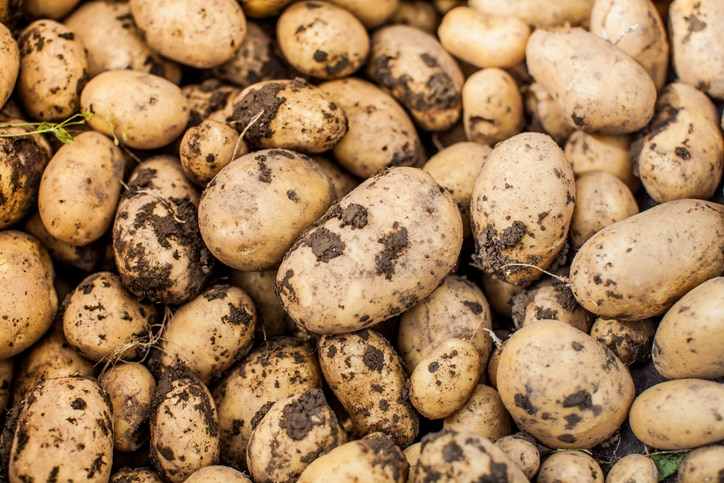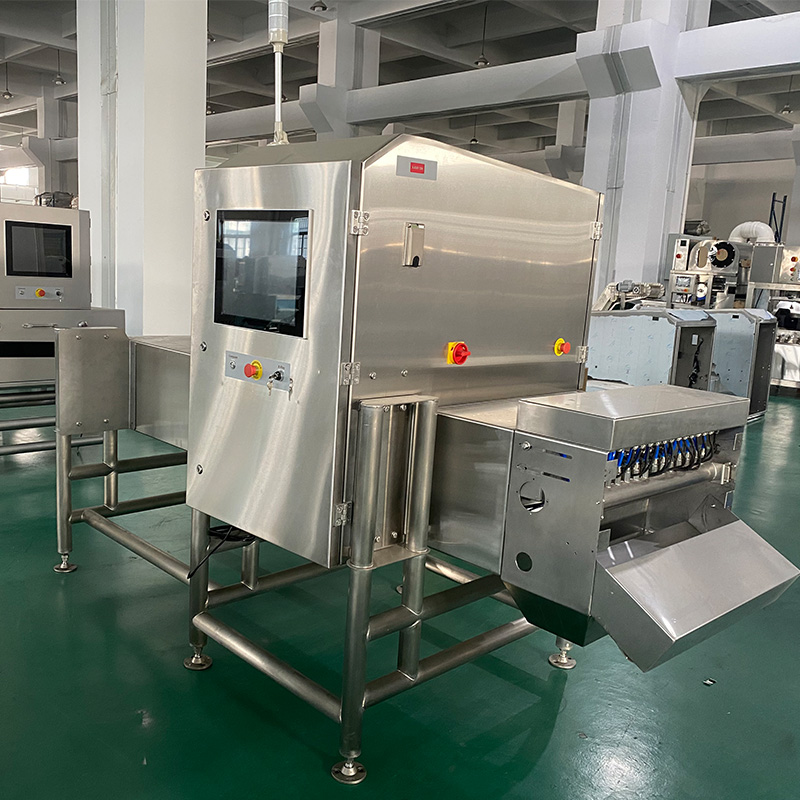Product Inspection Techniques for Fruit and Vegetable Processors
We’ve previously written about Contamination Challenges for Fruit and Vegetable Processors, but this article will delve into how food weighing and inspection technologies can be tailored to best meet the needs of fruit and vegetable processors.
Food manufacturers must incorporate food safety processes for various reasons:
Inspecting for safety – detecting metal, stone, glass and plastic foreign object contaminants.
Natural products present challenges in downstream handling. Farmed goods can have inherent contaminant risks, for example stones or small rocks can be picked up during harvesting and these can present a damage risk to processing equipment and, unless detected and removed, a safety risk to consumers.
As the food moves into the processing and packaging facility, there is potential for more foreign physical contaminants. The food production industry is run on cutting and processing machinery that can become loose, break down and wear out. As a result, sometimes small pieces of that machinery can end up in a product or package. Metal and plastic contaminants can be accidentally introduced in the form of nuts, bolts and washers, or pieces that have broken off from mesh screens and filters. Other contaminants are glass shards resulting from broken or damaged jars and even wood from the pallets used to move goods around the factory.
Inspecting for quality – verifying product weights for regulatory compliance, consumer satisfaction and cost control.
Regulatory compliance also means meeting global standards, including the FDA FSMA (Food Safety Modernization Act), GFSI (Global Food Safety Initiative), ISO (International Standards Organization), BRC (British Retail Consortium), and many industry-specific standards for meat, bakery, dairy, seafood and other products. According to the US Food Safety Modernization Act (FSMA) Preventive Controls (PC) rule, manufacturers must identify hazards, define preventive controls to eliminate/reduce hazards, determine process parameters for these controls, and then implement and continue to monitor the process to ensure the system is working properly. Hazards can be biological, chemical and physical. Preventive controls for physical hazards often include metal detectors and X-ray inspection systems.
Ensuring product integrity – ensuring fill level, product count and freedom from damage.
Delivering consistent quality products is essential to protect your brand and your bottom line. That means knowing that the weight of a packaged product being shipped out the door matches the weight on the label. No one wants to open a package that is only half filled or even empty.


Bulk Food Handling
Fruits and vegetables have an added challenge. Product inspection techniques are most commonly used to inspect packaged products, but many farmed products need to be inspected unpackaged, and they may be delivered in large bulk quantities (think apples, berries, and potatoes).
For centuries, food producers have used simple techniques to sort out physical contaminants from bulk agricultural products. A screen, for example, allows bigger items to stay on one side while smaller ones fall to the other side. Separating magnets and gravity have been exploited as well to remove ferrous metals and dense materials, respectively. The original detection equipment-trained workers can visually inspect for just about anything but can be costly and less accurate than machines as people can tire.
Automated inspection of bulk foods is achievable but special consideration must be given as to how the products are handled. During the in-feed process, bulk foods should be placed on the belt continuously and efficiently, then a metering system should help ensure the product height is consistent prior to inspection and the materials are able to easily flow through the inspection system. In addition, the metering system should help ensure that the product isn’t stacked too high on the belt because that would potentially allow hidden material to be out of the range of the detectors. Belt guides can keep products flowing smoothly, free of jams and trapped food items. The belt should have suitable guides so the product stays in the inspection area and doesn’t get trapped under the belt, on the rollers or over the detector (which avoids frequent cleaning.) The inspection software and hardware must be able to detect and reject the unwanted material – but not reject more than necessary materials.
Such bulk handling of foods has pros and cons – it allows for quick and efficient inspection and the removal of foreign objects, but it rejects a greater proportion of product and requires more floor space than discrete inspection systems.
Fitting the correct handling system to the application is key to success and an experienced system vendor will be able to guide a processor through selection.
After-Shipment Safety
Some food manufacturers may take safety precautions a step further by packaging in new materials or adding tamper-proof seals on packaged products. Inspection equipment must be able to identify contaminants after the foods are packaged.
Metalized material that is automatically formed into bags with heat seals on either ends have now become common packaging for snack foods. A single package of some foods may have been normally wrapped in plastic but is now wrapped in polymer multi-layer films in order to retain aroma, preserve flavors, and extend shelf life. Folding cartons, composite cans, flexible material laminations and other packaging alternatives are also in use or being customized for new offerings.
And if the fruits, like various berries are being added to other products (jams, prepared foods, or bakery goods), there are more areas in the plant where potential contaminants may be introduced.